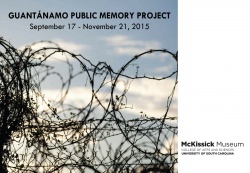Difficult History
The readings this week all dealt with issues of "difficult history" and how this is reflected in public history sites. In Stanton's the Lowell Experiment, Stanton assesses the way the NPS site at Lowell addresses difficult labor practices and relates issues to present day issues in labor. Stanton also spends a great deal of time discussing the activist orientation and social history background of many original participants in the public history movement. Lowell asks hard questions about the morality and viability of using public history to revitalize a city, who this redevelopment is actually helping, and why. One of the most interesting elements of Lowell's work is her demographic analysis of public historians themselves. While public historians are often those interpreting history, there own backgrounds are not generally included in an analysis of a site. Not surprisingly, Lowell found that these public historians were overwhelmingly white, middle class, educated people from working class origins who lean left and have some critiques of capitalism. Lowell then goes on to analyze how this may effect interpretation. This is an excellent opportunity to reflect on the role we, as public historians, play in interpreting this history and how our own background may effect it. It also begs the question, does public history need more racial and ethnic diversity? More gender equity or class based diversity? I, as someone in a Ph.D program, am curious as to how this compares with those people entering Ph.D programs and become academic historians. This analysis was the most interesting part of Lowell's book for me and I think really reframes how I see the role of public historians at historic sites. Gary Nash's article focuses on his succesful attempt to get slavery included in the reinterpretation of the Liberty bell and the president's house. While Nash's article is at times problematic and can be too focused on the role of Academic historians in creating public history, his article is illustrative of the animosity and difficulty in interpreting controversial history at national historic sites.
These works, more than others we have discussed this semester, make it apparent the role of public historians in constructing or criticizing a grand national narrative of history.
Last semester, at the University of South Carolina, I took a class on historic site interpretation organized around the International Sites of Conscious and focusing on difficult history. Our project for this class was to curate an exhibit to be displayed in the Mckissick Museum alongside the Guantanamo Public Memory Project. This project gave me first hand experience interviewing and interpreting history that could be controversial and made clear how difficult it actually is.
These lessons are ones we can all apply to the Powel house in our interpretations. While the Powel house wants to tell grand national stories, there are other stories that may be controversial that are important to tell as well. It is our job to figure out how to interpret these stories in a way that is meaningful and challenges visitors.
http://artsandsciences.sc.edu/mckissickmuseum/guantanamo-public-memory-project
